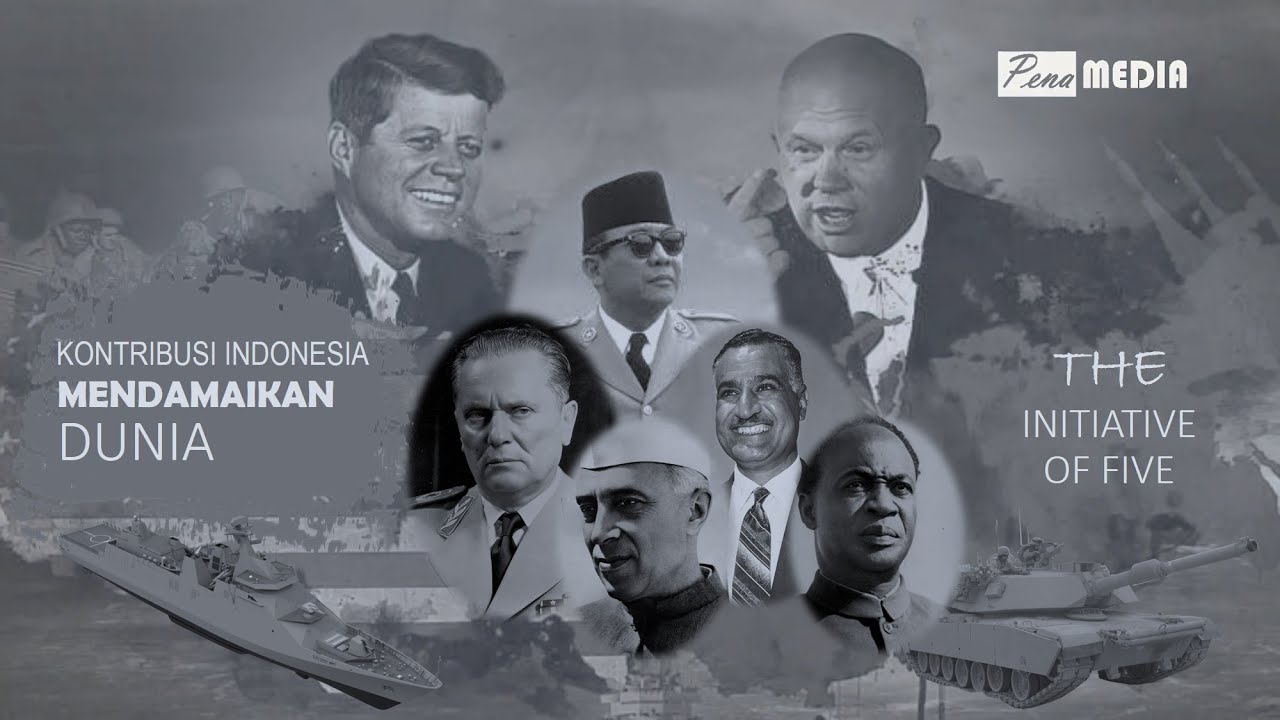Video Pembelajaran #29 || Dinamika Peran Indonesia PPKn
Summary
TLDRThis video explores Indonesia's role in promoting world peace through international organizations like the United Nations, ASEAN, and the Non-Aligned Movement. The discussion covers Indonesia's involvement in peacekeeping efforts, regional cooperation, and its diplomatic stance of neutrality between the West and the East. The video also touches on Indonesia's sovereignty, its potential in global affairs, and the importance of knowledge, technology, and resource management in shaping its international influence. The educational content is aimed at deepening the understanding of Indonesia’s dynamic foreign policy and regional partnerships.
Takeaways
- 😀 Indonesia plays a significant role in world peace through international organizations such as the UN, ASEAN, and the Non-Aligned Movement.
- 😀 The main learning goal is to understand Indonesia's contribution to global peace according to the 1945 Indonesian Constitution.
- 😀 ASEAN (Association of Southeast Asian Nations) was formed on August 8, 1967, through the Bangkok Declaration, with five founding members.
- 😀 The Bangkok Declaration aims to accelerate economic growth, social progress, and cultural development in Southeast Asia.
- 😀 ASEAN also focuses on increasing regional peace, stability, and cooperation in areas like social techniques, science, and administration.
- 😀 Indonesia and other ASEAN members signed significant agreements such as the Declaration of a Zone of Peace, Freedom, and Neutrality in 1971.
- 😀 Brunei joined ASEAN in 1984, followed by Vietnam, Laos, Myanmar, and Cambodia in the years that followed, expanding the organization.
- 😀 Timor-Leste applied for ASEAN membership in 2011, although its membership is still under discussion.
- 😀 Indonesia is also a founding member of the United Nations, established on October 24, 1945, aiming to resolve international disputes peacefully and ensure territorial integrity.
- 😀 Indonesia's foreign policy aligns with the Non-Aligned Movement, ensuring the country's independence and neutrality in global power struggles between the West and the East.
Q & A
What is the main topic of the video script?
-The main topic of the video is about Indonesia's role in promoting world peace through international organizations, including the United Nations (UN), ASEAN, and the Non-Aligned Movement.
What is the primary goal of the learning module discussed in the video?
-The primary goal of the learning module is to understand Indonesia's role in world peace and to analyze the dynamics of Indonesia's foreign policy in relation to international organizations, according to the 1945 Constitution of Indonesia.
When and where was the ASEAN Declaration (Bangkok Declaration) signed?
-The ASEAN Declaration (Bangkok Declaration) was signed on August 8, 1967, in Bangkok, Thailand.
Who were the five founding countries of ASEAN?
-The five founding countries of ASEAN were Indonesia, Malaysia, the Philippines, Singapore, and Thailand.
What were the main objectives outlined in the ASEAN Declaration?
-The main objectives outlined in the ASEAN Declaration were to accelerate economic growth, social progress, and cultural development, enhance regional peace and stability, promote cooperation in various fields, maintain close cooperation in regional and international organizations, and improve education, training, and research.
Which countries joined ASEAN after the initial five founding members?
-Brunei Darussalam joined ASEAN on January 7, 1984, followed by Vietnam in 1995, Laos and Myanmar in 1997, Cambodia in 1999, and Timor-Leste, which applied for membership in 2011.
What is the main purpose of the United Nations (UN) as mentioned in the video?
-The main purpose of the United Nations, as mentioned in the video, is to resolve international disputes peacefully and ensure territorial integrity of nations, preventing threats to national sovereignty.
What is the Non-Aligned Movement (NAM) and how does Indonesia relate to it?
-The Non-Aligned Movement (NAM) consists of countries that do not align with either the Western bloc (led by the United States) or the Eastern bloc (led by the Soviet Union). Indonesia's foreign policy is based on being non-aligned, asserting its sovereignty and independence from both superpowers.
How has the political landscape changed since the Cold War in relation to Indonesia's foreign policy?
-Since the end of the Cold War, with the dissolution of the Soviet Union in the 1990s, Indonesia's non-alignment policy has continued, although the influence of the United States remains significant in global politics.
What is Indonesia’s role in the international community based on its sovereignty and resources?
-Indonesia, with its vast archipelago, abundant natural resources, and significant human capital, is positioned to play an important role in global affairs and contribute to international peace, security, and economic growth.
Outlines

This section is available to paid users only. Please upgrade to access this part.
Upgrade NowMindmap

This section is available to paid users only. Please upgrade to access this part.
Upgrade NowKeywords

This section is available to paid users only. Please upgrade to access this part.
Upgrade NowHighlights

This section is available to paid users only. Please upgrade to access this part.
Upgrade NowTranscripts

This section is available to paid users only. Please upgrade to access this part.
Upgrade NowBrowse More Related Video

PPKn Kelas 11 BAB 4 Dinamika Peran Indonesia dalam Perdamaian Dunia #part2

Rangkuman Materi PPKN Kelas 11 Bab 4 Dinamika Peran Indonesia dalam Perdamaian Dunia

Peran Indonesia Dalam Menjaga Perdamaian Dunia

Sejarah gerakan non blok

Peran Indonesia dalam Perang Dingin

CLASS XII - THE ACTIVE ROLE OF THE INDONESIAN NATION IN THE COLD WAR TIME
5.0 / 5 (0 votes)